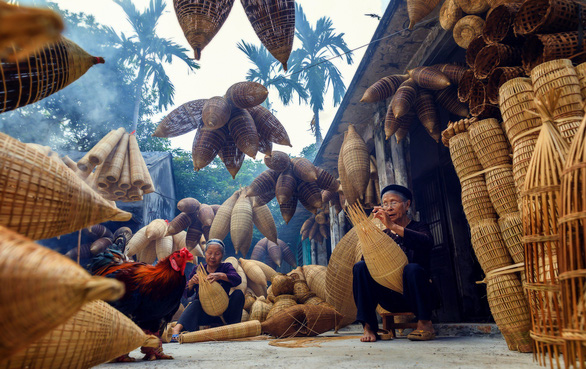A few villages in northern Vietnam are famous for maintaining its traditional craft of manually producing bamboo underwater traps over the past more or less 200 years.
The villages are collectively named Thu Sy because they all sit in the Thu Sy Commune in Hung Yen Province, about 54 kilometers to the southeast of capital Hanoi.
In the rural tranquility occasionally disturbed by rooster crows and canine barks, craftspeople sit at their homes weaving traps from strips of bamboo and flexible wood of a palm species called calamus.
The items, resembling an elongated spheroid, can be called fish traps for short but they can actually catch other aquatic creatures such as crabs and eels as the objects have two openings of different sizes that prevent the victims from escaping.
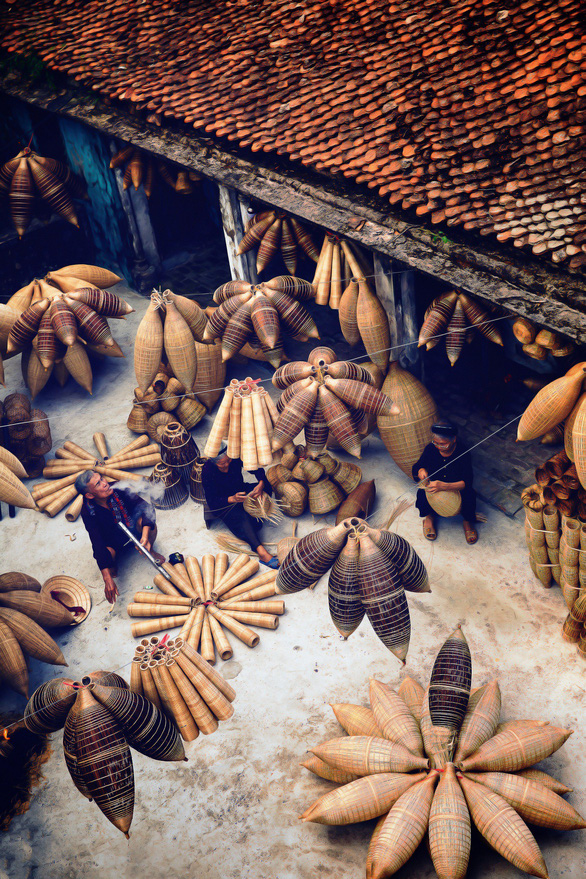 |
| Family members weave bamboo fish traps in a Thu Sy village in Hung Yen Province, northern Vietnam. Photo: Nguyen Tan Tuan |
In Vietnamese the symmetrical traps are known as ‘đó,’ pronounced just as ‘door’ but with a rising tone, shortened ‘-oor’ vowel and not very rounded lips.
To use the tools, which are also found commonly in Vietnam’s Mekong Delta, farmers apply the same principle: making them the only way by which freshwater creatures can go in the flow of water.
Nowadays the fish traps can additionally be seen as quaint interior decorations.
The Thu Sy cluster of villages has 500 people making a living by producing fish traps and many of them have spent most of their life time this way.
 |
| An artisan makes a bamboo fish trap in a Thu Sy village in Hung Yen Province, northern Vietnam. Photo: Nguyen Tan Tuan |
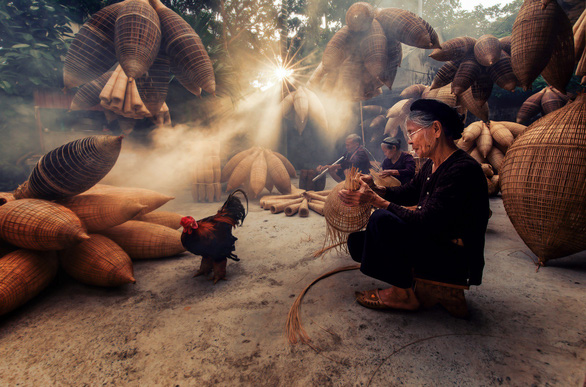 |
| An artisan makes a bamboo fish trap in a Thu Sy village in Hung Yen Province, northern Vietnam. Photo: Nguyen Tan Tuan |
Luong Son Bac, one of the long-standing artisans, said creating a beautiful trap is a feat that results from skillful weaving of well-chosen wooden materials.
His family members work in different stages of the process, ranging from bamboo splitting and strip smoothening to weaving.
The most difficult job is finishing the trap by crossing the straps in a way to make an opening, the man in his 80s said.
It takes around an hour for one trap to be completed, and then it may be placed high above a stove to so that the object can be smoked to be more durable and alga-proof, and take on a blackish hue as a byproduct.
A stand fish trap fetch VND20,000-25,000 ($0.9-1.1) while smoked ones sell for VND30,000-40,000 ($1.3-1.8) apiece.
The omnipresence of aquatic traps has become the raison d’être for the Thu Sy tourism scene in recent years.
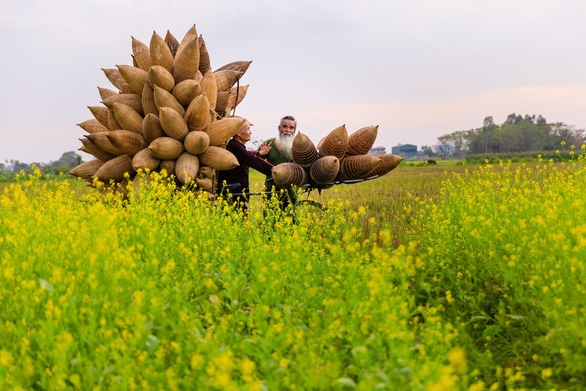 |
| Artisan Luong Son Bac walks a bicycle hanging bamboo fish traps in a winter cress field in Hung Yen Province, northern Vietnam. Photo: Nguyen Tan Tuan |
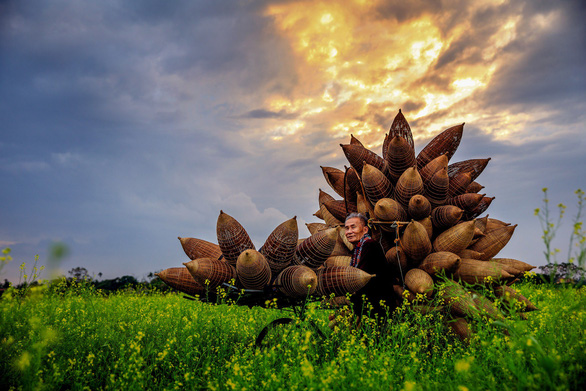 |
| Artisan Luong Son Bac walks a bicycle hanging bamboo fish traps in a winter cress field in Hung Yen Province, northern Vietnam. Photo: Nguyen Tan Tuan |
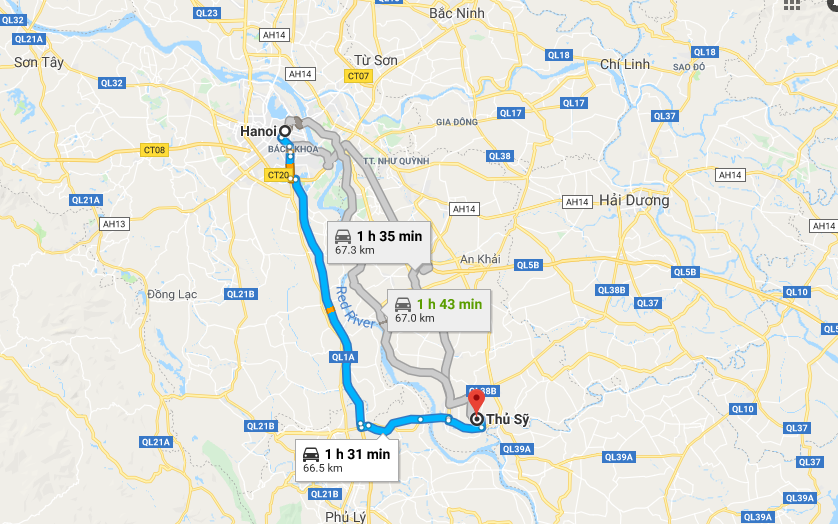 |
|
Google Maps suggested route from Hanoi to the Thu Sy craft area in Hung Yen Province, northern Vietnam |
Like us on Facebook or follow us on Twitter to get the latest news about Vietnam!



